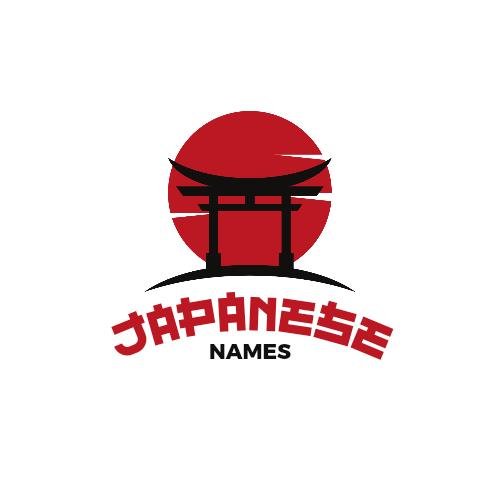This post contains affiliate links. See the affiliate disclaimer here.
Are you an animal enthusiast fascinated by the beauty and diversity of the animal kingdom? If so, you’ll be delighted to explore the captivating world of Japanese animal names.
With its rich cultural heritage, the Japanese language offers a unique and poetic way of naming animals. From majestic creatures to adorable companions, this article will take you on an exciting journey through the Japanese names of various animals. So, let’s embark on this enchanting adventure together!

Japanese Animal Names
Japanese culture has a deep appreciation for nature, which is beautifully reflected in the way animals are named in the language.
Each animal’s name captures its essence, forming a connection between language and nature. Let’s explore the fascinating list of Japanese animal names, divided into different categories for easier comprehension.
Land Animals
Wild Animals:
- Lion (ライオン): A lion is simply referred to as “raion” in Japanese, borrowed from English.
- Mountain Lion (山猫, yamaneko): Commonly used for large felines like cougars or mountain lions.
- Boar (猪, inoshishi): The correct term for wild boar.
- Japanese Macaque (日本猿, Nihonzaru): Native monkeys of Japan, noted for their red faces and tendency to bathe in hot springs.
- Raccoon Dog (狸, tanuki): A unique East Asian animal that resembles a raccoon, known in Japanese folklore.
- Fox (狐, kitsune): Common throughout Japanese lore and considered very intelligent and magical.
- Goat (山羊, yagi): A general term for goat.
- Hawk (鷹, taka): Used for various birds of prey, not limited to a specific species of hawk.
- Bear (熊, kuma): The generic term for bears, including species native to Japan like the Ussuri brown bear.
- Rabbit (兎, usagi): Refers to all types of rabbits and hares.
Pets and Domesticated Animals:
- Dog (犬, inu): The general term for dogs.
- Cat (猫, neko): The general term for cats.
- Bear (熊, kuma): As noted, “kuma” means bear; it’s not typically used to refer to dogs.
- Tiger (虎, tora): “Tora” is often used in names and patterns associated with stripes resembling those of a tiger but is not a term for pets.
- Fish (魚, sakana): A broad term for fish; does not apply to a particular pet species.
- Hamster (ハムスター): It’s the same as the English term, adopted into Japanese.
- Monkey (猿, saru): While not common pets, monkeys are sometimes kept as such, particularly in entertainment.
- Rooster (鶏, niwatori): Specifically used for chickens and roosters, “niwatori” refers to domesticated birds.
- Mouse (鼠, nezumi): The word for mice and rats, could also be pets.
- Deer (鹿, shika): Deer are not normally domesticated pets in Japan, but this is the term for deer.
Aquatic Animals:
Marine Life:
- Whale (鯨, kujira): A general term for whales.
- Shark (鮫, same): The general term for sharks.
- Crab (蟹, kani): Refers to all types of crabs.
- Octopus (蛸, tako): A common sea creature in Japan, often used in cuisine.
- Tuna (鮪, maguro): The general term for tuna, popular in sashimi and sushi.
- Scallop (帆立, hotate): A type of shellfish, hotate is a popular seafood.
- Squid (烏賊, ika): Squids are common in Japanese waters and cuisine.
- Jellyfish (水母, kurage): Refers to jellyfish species.
- Pufferfish (河豚, fugu): Notorious for its toxicity and a delicacy in Japan, requiring a licensed chef to prepare.
- Abalone (鮑, awabi): A type of mollusk highly prized in Japanese cuisine.
Freshwater Fauna:
- Carp (鯉, koi): Cultivated in Japan for ornamental purposes, particularly in ponds.
- Eel (鰻, unagi): Specially the freshwater eel, often consumed as a delicacy.
- Goldfish (金魚, kingyo): Popular ornamental fish originally bred in China.
- Japanese Ricefish (鮒, funa): Common freshwater fish in Japan; often kept in ponds.
- Japanese Marsh Shrimp (沼蝦, numaebi): A native species of freshwater shrimp.
- Loach (ドジョウ, dojo): Common in waterways and often used in Japanese cuisine.
- Medaka (メダカ or 斑, obakasan): A type of small freshwater fish, popular as pets.
- Daisy’s Ricefish (姫天ノ川鯉, hime-amago): A type of small freshwater fish related to medaka.
Birds:
Exotic Birds:
- Hawk (鷹, taka): Refers to birds of prey like hawks.
- Crane (鶴, tsuru): Revered in Japanese culture symbolizing good fortune and longevity.
- Eagle (鷲, washi): Used for eagles, which are larger than hawks.
- Owl (梟, fukuro): Known for being a symbol of wisdom.
- Crested Ibis (朱鷺, toki): Once nearly extinct in Japan, it is now a conservation symbol.
- Mandarin Duck (鴛鴦, oshidori): Noted for its colorful plumage and conjugal fidelity.
- Crow (烏, karasu): Commonly seen throughout Japan, associated with various folklore.
- Bulbul (鵯, hiyodori): A bird species common in many East Asian countries.
Common Birds:
- Heron (鷺, sagi): These wading birds are common in Japanese rice fields and rivers.
- Bird (generic; 鳥, tori): This is the general term for bird.
- Pheasant (雉, kiji): The Green Pheasant, in particular, is native to Japan and serves as its national bird.
- Sparrow (雀, suzume): Sparrows are ubiquitous in Japan.
- Lark (雲雀, hibari): A bird often associated with rural landscapes and poetry.
- Bull-headed Shrike (百舌鳥, mozu): Known for its distinctive behavior of impaling its prey on thorns or barbed wire.
- Japanese Bush Warbler (鶯, uguisu): Famous for its melodious chirping, it symbolizes the coming of spring.
- Small Bird (generic; 小鳥, kotori): A term for any small-sized bird.
- White Stork (白鳥, shirotori): This term could be confused with “swan,” which is also called “hakucho” (白鳥) in Japanese.
- Water Rail (水鳥, mizutori): While “mizutori” can mean “waterbird” in general, the water rail is a specific type of bird found near wetlands.
Insects:
Butterflies and Moths:
- Butterfly (蝶, cho): The broad term for butterflies.
- Moth (蛾, ga): The broad term for moths.
- Dragonfly (蜻蛉, tonbo or tombo): A creature admired for its agility and seen often in rice fields and near water.
- Swallowtail Butterfly (アゲハチョウ, ageha-chou): A group containing many species known for tail-like extensions on their hind wings.
- Bell Cricket (鈴虫, suzumushi): Known for its distinctive chirping that sounds like bell ringing, appreciated in Japanese culture.
Beetles:
- Rhinoceros Beetle (カブトムシ, kabutomushi): These beetles are popular pets for children in the summertime.
- Stag Beetle (クワガタムシ, kuwagatamushi): Similar to rhinoceros beetles, stag beetles are also popular in Japan.
- Firefly (蛍, hotaru): Celebrated for its mystical light, fireflies hold a special place in Japanese summers and poetry.
- Praying Mantis (カマキリ, kamakiri): Admired for its predatory skills and unique appearance.
- Asian Giant Hornet (スズメバチ, suzumebachi): A large and aggressive hornet that can pose a significant threat if provoked.
Reptiles and Amphibians:
Reptiles:
- Snake (蛇, hebi): This is the general term for snakes in Japan.
- Turtle/Tortoise (亀, kame): Refers to both turtles in water and tortoises on land.
- Japanese Rat Snake (青大将, ao daisho, or アオダイショウ): Non-venomous snake common in Japan, known as “aodaisho.”
- Red-Eared Slider (ミドリガメ, midori game): An invasive turtle species with distinctive red marks near its ears.
- False Coral Snake (サンゴヘビ, sango hebi): This term is sometimes used for snakes that have similar coloration to the venomous coral snake, but it’s more of a generic term rather than one specific to Japan. In Japan, a mimic of the coral snake doesn’t exist, as true coral snakes are not native to the region.
Amphibians:
- Frog (蛙, kaeru): This term encompasses all frogs.
- Tree Frog (アマガエル, amagaeru): Amagaeru refers specifically to the Japanese tree frog, a common species in Japan.
- Fire-bellied Toad (ヒキガエル, hikigaeru): This term actually refers to toads in general, but one of the prominent species with a fiery belly is known as “akagaeru” (アカガエル).
- Terrapin (ミシシッピアカミミガメ, Mississippi akamimigame): A specific kind of pond slider, often referred to by its full name to distinguish it from other similar turtle species.
- Japanese Giant Salamander (オオサンショウウオ, ōsanshōuo): An endemic species to Japan, known for its large size and status as a special natural monument.
Conclusion
The world of Japanese animal names showcases the profound connection between language and nature. Each animal holds symbolic significance and reflects the rich cultural tapestry of Japan.
From the regal shishi to the elusive ga, these names celebrate the wonder and beauty present in every corner of the animal kingdom. So, the next time you encounter an animal, take a moment to appreciate its name and the harmony it brings to the world around us.
FAQs
Q1: Are these animal names widely used in daily life in Japan?
While Japanese animal names are known and appreciated by the locals, English names are commonly used in daily conversations. However, these traditional names continue to hold significant cultural value, especially in artistic expressions and literature.
Q2: Do Japanese animal names have a deeper meaning?
Yes, many Japanese animal names have symbolic meanings and can be associated with cultural beliefs, folklore, or historical significance. Some names also reflect the characteristics or behaviors of the respective animals.
Q3: Are there any endangered animals unique to Japan?
Yes, Japan is home to several endangered animals, such as the Japanese macaque (snow monkey), Amami rabbit, Okinawa rail, and Iriomote cat. Conservation efforts are underway to protect these unique species and their habitats.
Q4: Can I use Japanese animal names as pet names for my own animals?
Certainly! Using Japanese animal names as pet names can add a touch of elegance and uniqueness to your furry friends. Just ensure that the name aligns with your pet’s characteristics and personality.
Q5: Can I find these animals outside of Japan?
While many of the animal species listed have a presence beyond Japan, some are native to the country. However, interest in Japanese culture and wildlife through educational programs and zoos has allowed people worldwide to appreciate and learn about these fascinating creatures.
Remember to have fun exploring the Japanese animal names and the enchanting world they represent. Whether you’re an animal lover, language enthusiast, or simply curious about Japan’s vibrant culture, these names will certainly leave an indelible impression on you.

